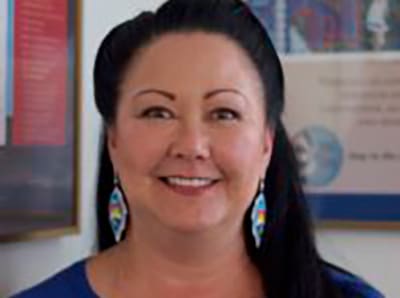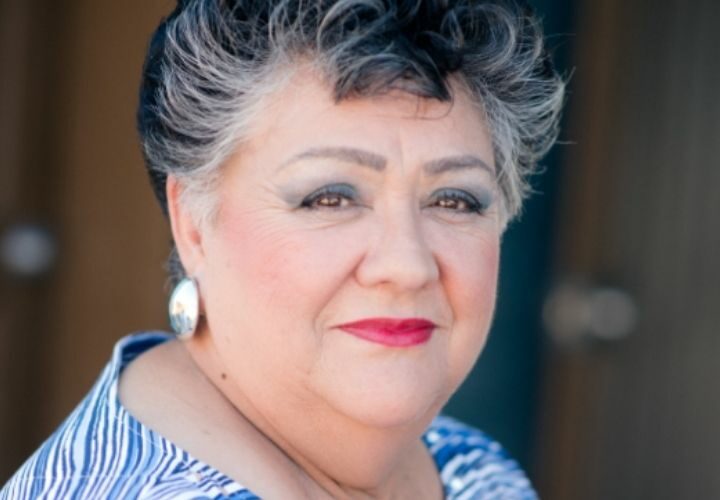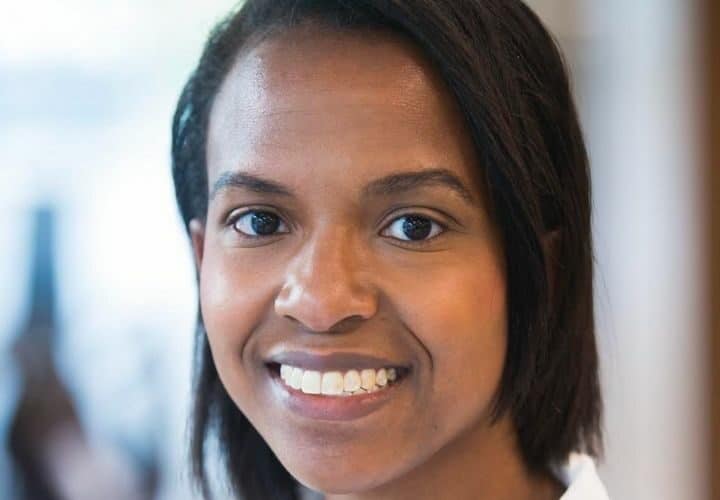Ka`imi A. Sinclair has devoted her career to brain health equity in indigenous communities and to getting these communities more involved in Alzheimer’s and dementia research.
This article is part of the series Diversity & Dementia, produced by Being Patient with support provided by Eisai.
One of every 10 Americans will develop Alzheimer’s as of age 65. In some communities, however, this sweeping public health threat is little understood. Ka`imi A. Sinclair, an associate professor and associate director of partnerships for native health at the University of Washington, has worked in Alzheimer’s and dementia advocacy and research for nearly two decades, but in communities like her native community of Western Cherokee, she says, resources to spread awareness about — much less treat — Alzheimer’s and related dementias are severely lacking.
“After settler colonialism, American Indians and Alaskan Natives didn’t live to the age where they [would have] developed these diseases,” Sinclair told Being Patient. “The lifespan of American Indians was reduced as a result of Western diseases brought to the Americas by Europeans and federal policies that promoted and supported indigenous genocide, harsh living conditions, and little to no opportunities to benefit from a white patriarchal, capitalist system.”
But recent improvements in medical care and the quality of life for American Indians has increased life expectancies for this population, and today, many communities are experiencing the complexities of Alzheimer’s.
But, due to healthcare inequities, and the overwhelming whiteness of brain health research, indigenous communities — like Sinclair’s native Western Cherokee community — have little background on what it is and few resources for diagnosing and navigating it.
Originally from Florida, Sinclair earned a Bachelor’s at the University of New Mexico in community health and completed a Master’s in public health. “I wanted to get a PhD in health behavior and health education to create interventions that would motivate and encourage people [to improve their health and wellbeing],” she told Being Patient. But in the course of her studies in New Mexico, she developed a more specific interest: “During my undergrad, and my Master’s in public health, I became interested in how culture influences health and illness, beliefs and behaviors.”
In the more than two decades since, she has worked on community education initiatives, in roles including co-director of partnerships at the Native Health/Institute for Research and Education to Advance Community Health (IREACH), and co-leader of outreach, recruitment, and engagement core at Alzheimer’s Disease Resource Center. She has helped introduce prevention programs for different indigenous and marginalized groups in the U.S., including American Indians, Alaska Natives, Native Hawaiians, Pacific Islanders, Black and Latino Americans. Originally, her work was focused on diabetes and hypertension which is overrepresented in many of these marginalized groups. Today, she is largely focused on Alzheimer’s and brain health.
Dementia in indigenous communities
In indigenous communities, for the most part, Alzheimer’s symptoms are seen as just part of normal aging, Sinclair said. Many individuals don’t know that there are actionable interventions to prevent or delay its onset.
In other cases, the experience of Alzheimer’s itself can differ within these communities. Sinclair told Being Patient about another colleague who conducted focus groups with Native Alaskan caregivers. Hallucinations can be a symptom of Alzheimer’s and other forms of dementia, Sinclair explained, and in some cases, individuals who experienced this symptom would interpret their hallucinations as visions of their ancestors. Meanwhile, caregivers thought the ancestors may be welcoming the person into the next life. These interpretations are culture specific, Sinclair explained. Providing people more science-based information about the disease and its effects on the brain can help encourage people to seek appropriate medical treatment, address symptoms, extend and improve their quality of life.
“I do focus groups and surveys with people to find out what they know, what they don’t know, what they want to know about the topic,” Sinclair said of Alzheimer’s. She is then able to tailor existing materials to indigenous groups in a culturally-competent manner — speaking with communities on their own terms.
Learning about these experiences helps inform other scientists and community members who focus on educating the communities and empowering them to participate in clinical trials.
Culturally-Competent Communication and Education
Navigating within a different culture can be confusing and could cause issues with misinterpretation that erode trust between physicians or researchers and the members of a community who they’re trying to help. Sinclair said that one of the challenges is learning how to tailor your language with culturally-appropriate analogies.
“You need to understand how to talk to people, how to provide education and guidance,” Sinclair said. “Many indigenous cultures use stories to teach and learn things so we use stories, in our research and in our educational interventions.”
Enrolling indigenous Americans in Research
There is also an enormous challenge in getting Indigenous Americans to participate in research, Sinclair said. Since the majority of medical research has heavily focused on white caucasian people, much less is known about Alzheimer’s and its genetic risk factors in American Indians.
A recent study of a small sample of American Indians found that ApoE4, the largest genetic risk factor for Alzheimer’s in white populations, didn’t affect the risk of developing the disease for American Indians at all. “We have no idea what that really means,” Sinclair said.
To better understand the disease in American Indians, researchers must put forth a concerted effort to build trust within these communities so that members feel comfortable participating. This is why Sinclair studies the factors that make participation more likely.
To have a better chance of recruiting these participants, Sinclair found that studies would need “a native researcher, and people from the community involved in recruitment and implementation of the project.”
Before providing any education or attempting to enroll members in trials, Sinclair and others in the field use focus groups to assess the level of knowledge within the community and understand their concerns. This helps build trust and informs the researchers about the community’s needs, and also makes it more likely that they are able to successfully recruit participants for clinical trials.
Additionally, many people still have to travel hours to reach the site of a research trial. “Without providing compensation for their travel or lodging or for participating in your study, it forms a barrier for people to participate,” Sinclair said.
Since many of these communities are rural, another challenge is the lack of trained healthcare providers who are able to assess brain health and spot the early signs of cognitive impairment. If a patient doesn’t know there’s a problem, they’re unlikely to participate in a cognitive health research study, Sinclair said.
“There is an effort by the dementia action collaborative here in Washington [State] to tell people to get screened [for Alzheimer’s and other cognitive health issues],” Sinclair said. Once screened and diagnosed, they can contribute to studies looking to better understand, prevent and treat the disease, she added.
“Relationships are everything in the work that we do,” Sinclair said, adding that they “play a major part in whether people are going to participate in research.” She noted that indigenous and other marginalized communities or communities of color need assurance that “you’re not just there to just get them enrolled in a research study and take off.”
At a recent event called “In the Circle with Our Knowledge Keepers,” Sinclair and other researchers invited Native elders from different tribal nations to learn more about Alzheimer’s, dementia and participation in research. Event organizers provided information about different Alzheimer’s and dementia risk factors, like body mass index and hypertension. Additionally, event attendees were asked if they would be willing to provide saliva samples — samples that will help estimate the prevalence of Alzheimer’s genetic biomarkers in indigenous populations.
“More than 70 percent of American Indians reside in urban areas now, so there is a diaspora of Natives across the U.S.,” Sinclair said. A grant called Natives Engaged in Alzheimer’s Research (NEAR) is funding this event and others across the country. Sinclair and other researchers will be running these events at six sites across the country annually for the next five years to reach elders living in urban areas.
After the study ends, keep communities engaged
Encouraging community members to travel and participate in research helps the scientific community better understand race as a factor for Alzheimer’s. But what does it do for the participants themselves? Sinclair explained the importance of relaying the results of these research studies to the communities involved.
The Satellite Centers that hold annual outreach events with Native Elders, in collaboration with other researchers under the NEAR grant, prepare reports for Tribes to ensure any findings make it back to the communities affected.
Moving forward, Sinclair is seeking funding to create a series of educational videos tailored to indigenous audiences to promote Alzheimer’s research participation.
“I always remember somebody saying, ‘If you don’t get a seat at the table, you could be the meal,’” Sinclair said. She believes making media that truly takes its audience, their language and their cultural beliefs into account is key to enrolling more participants into clinical trials and improving health outcomes for Indigenous Americans.



